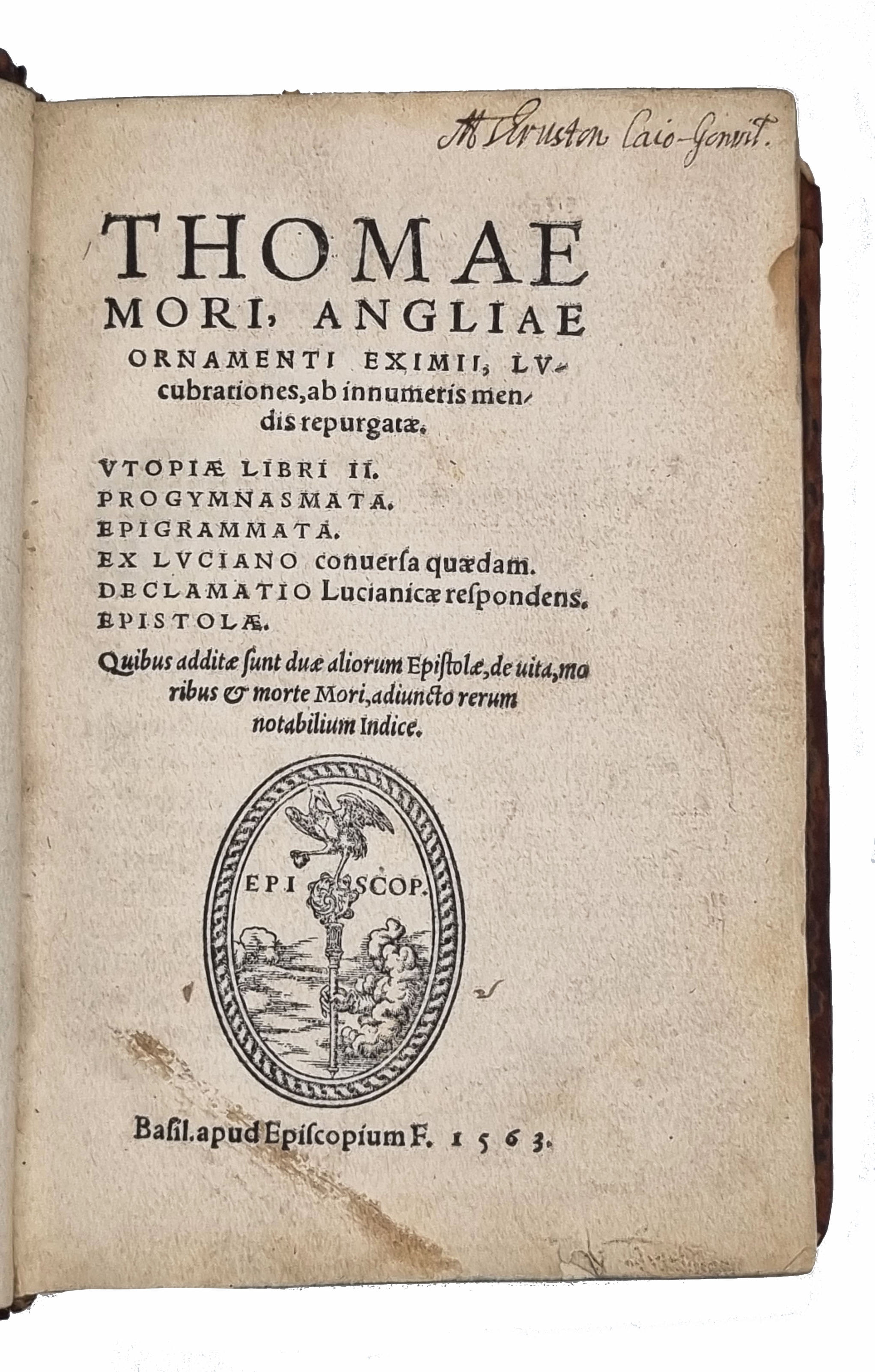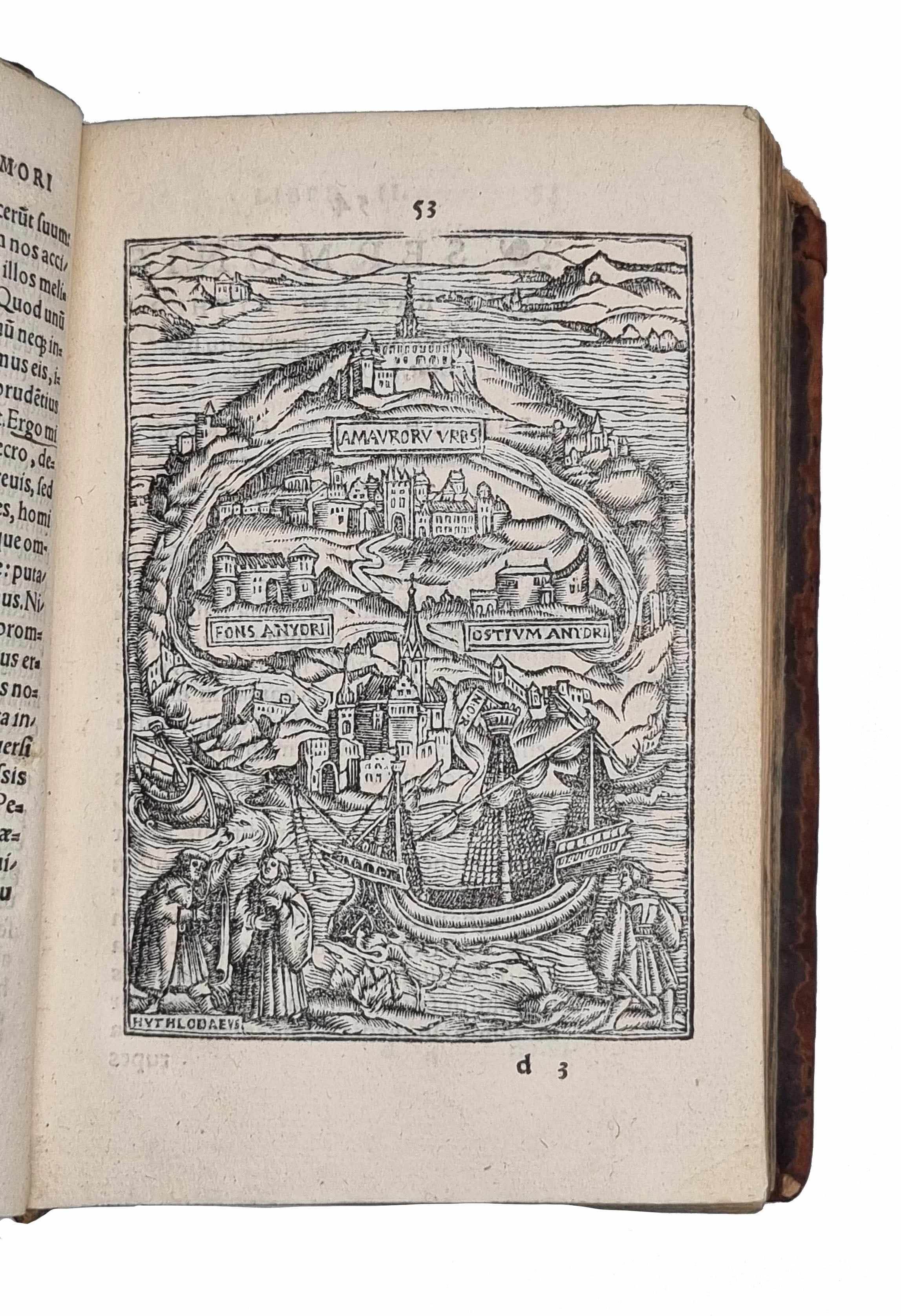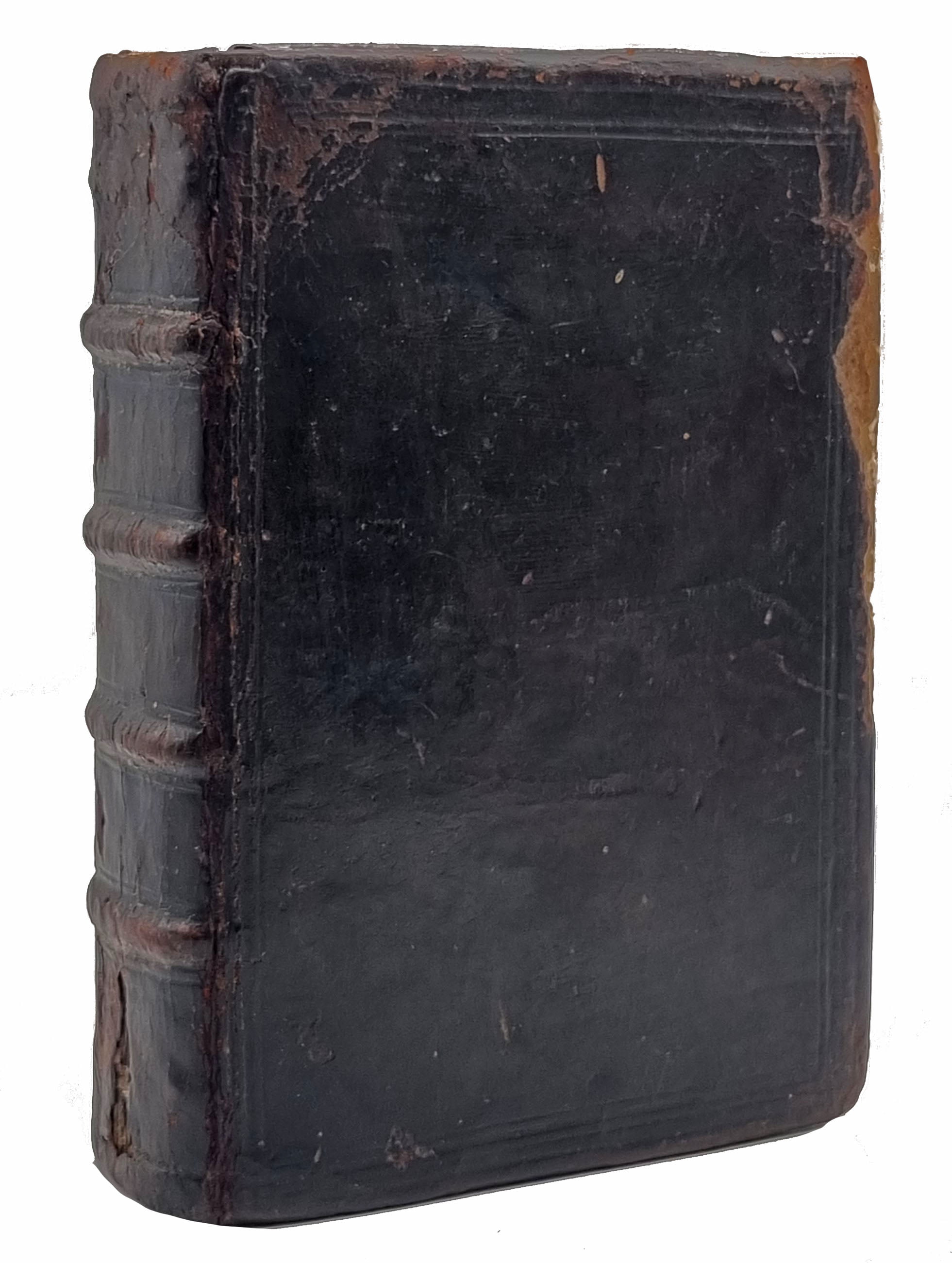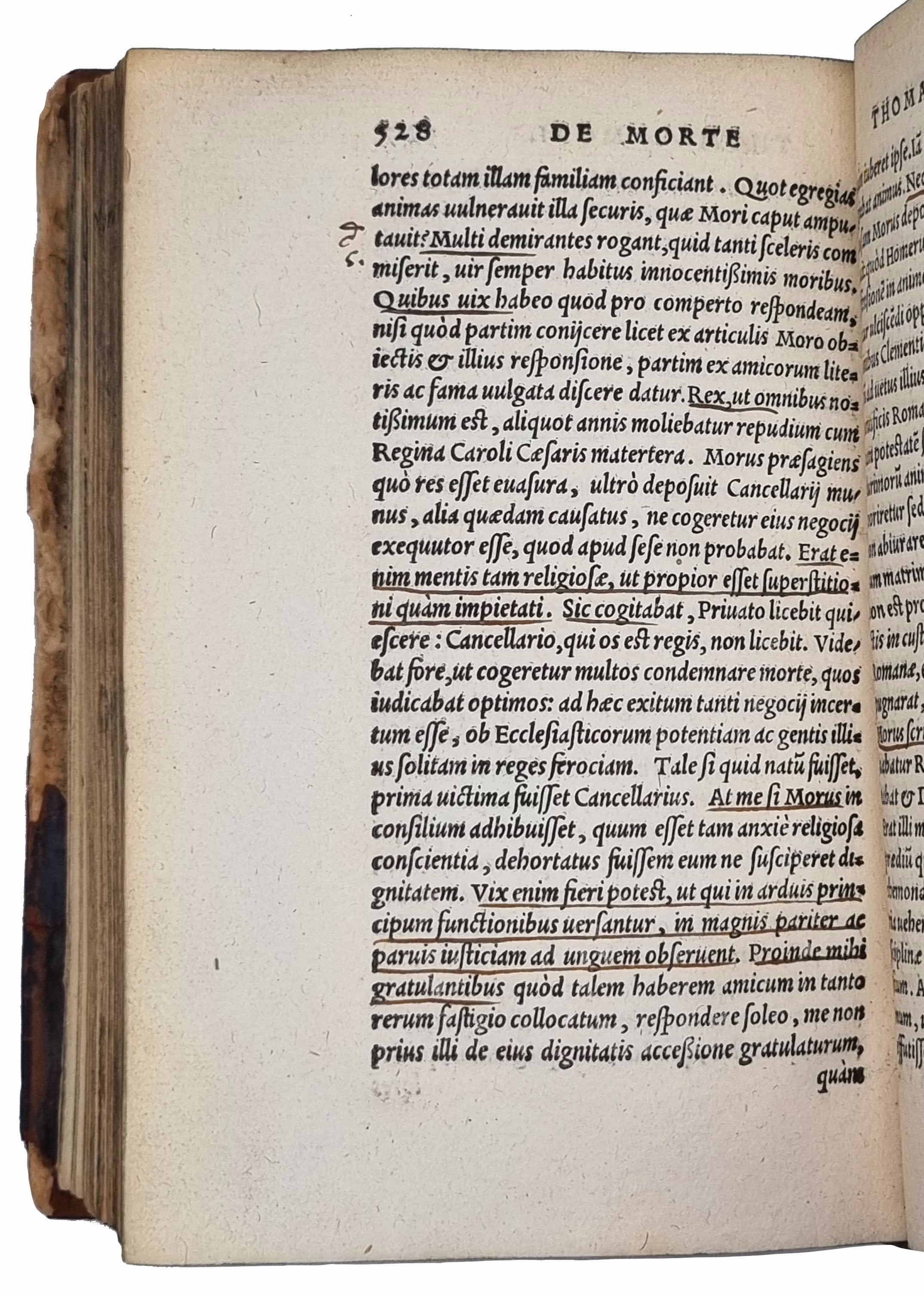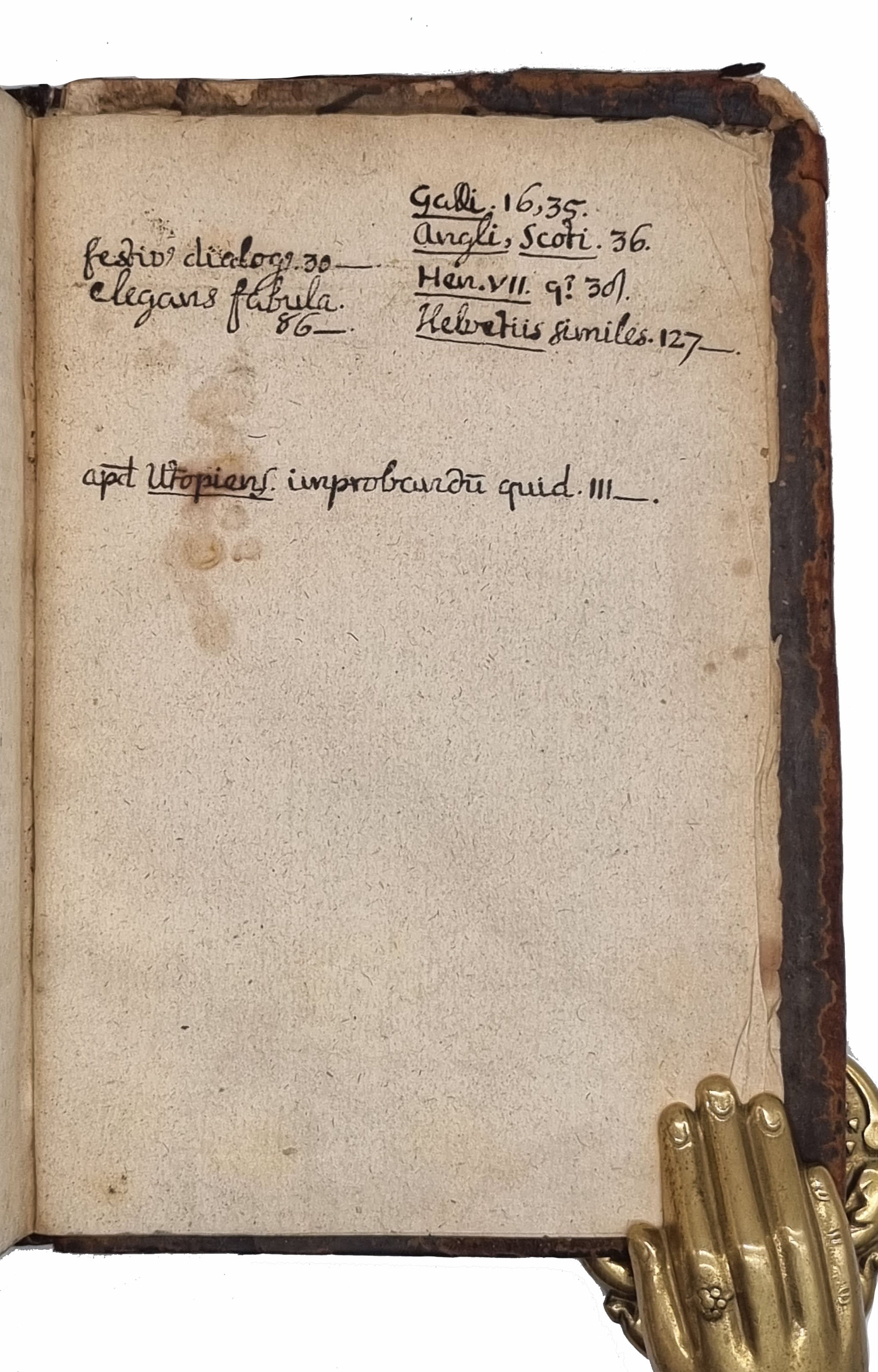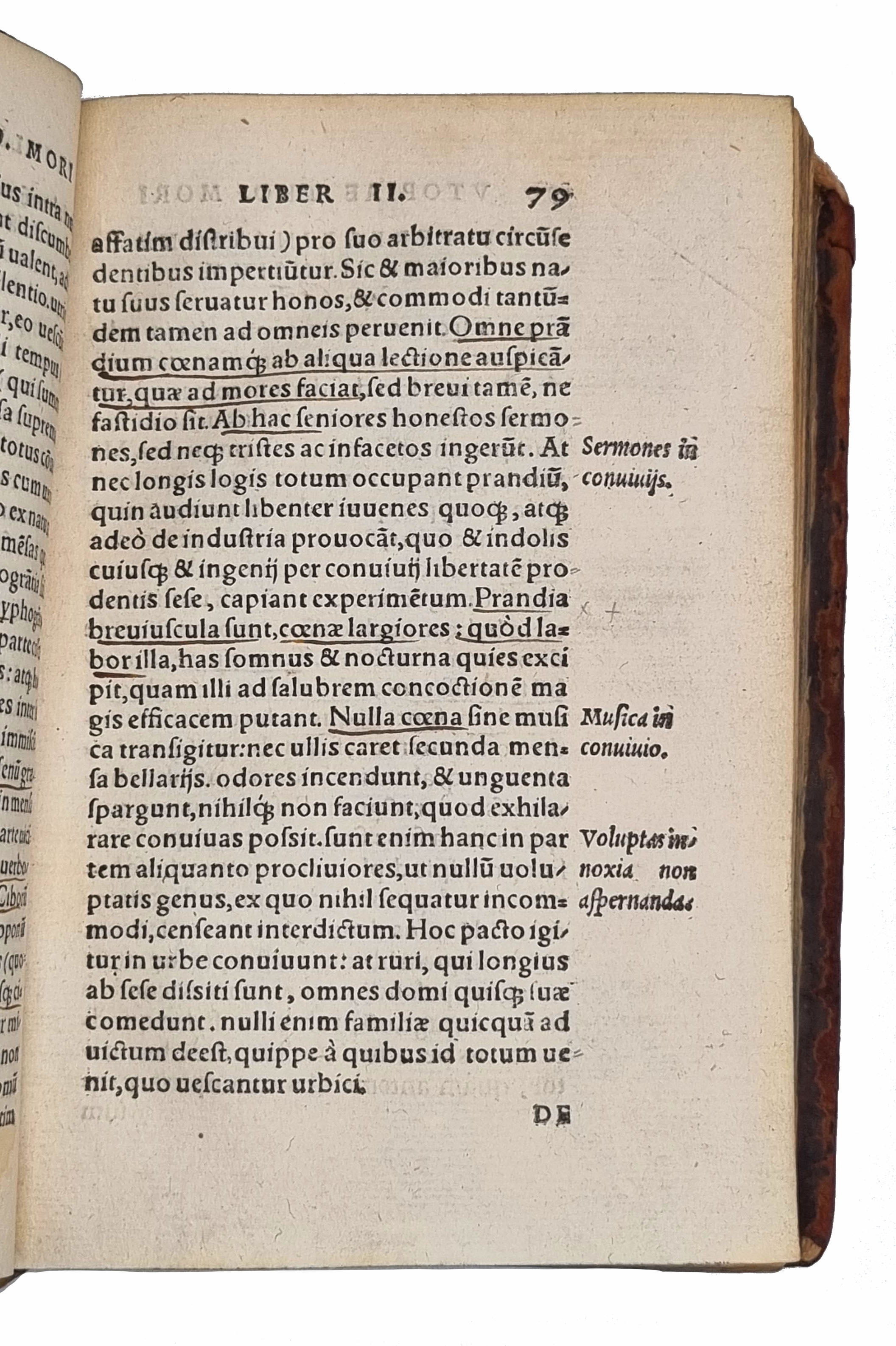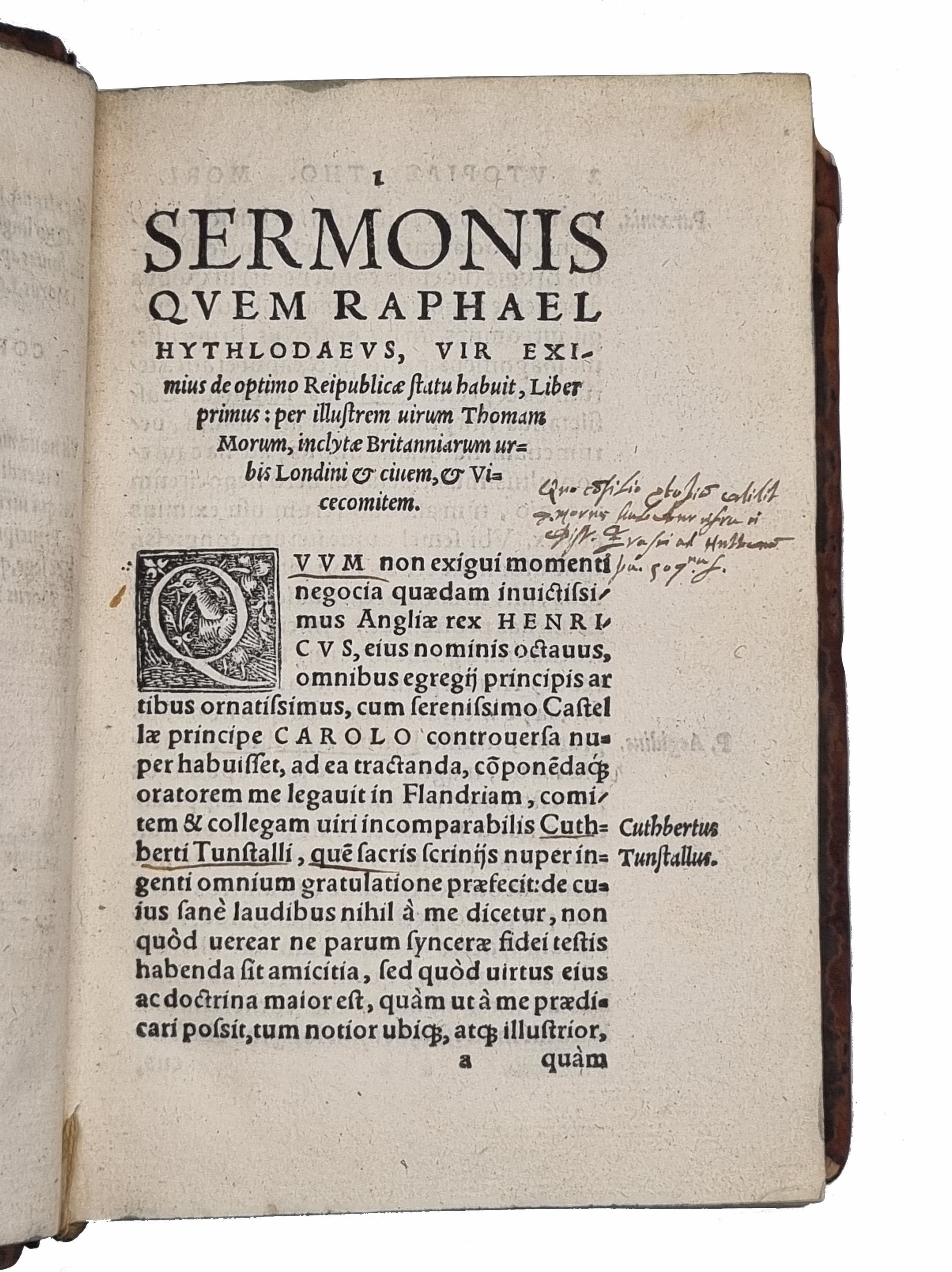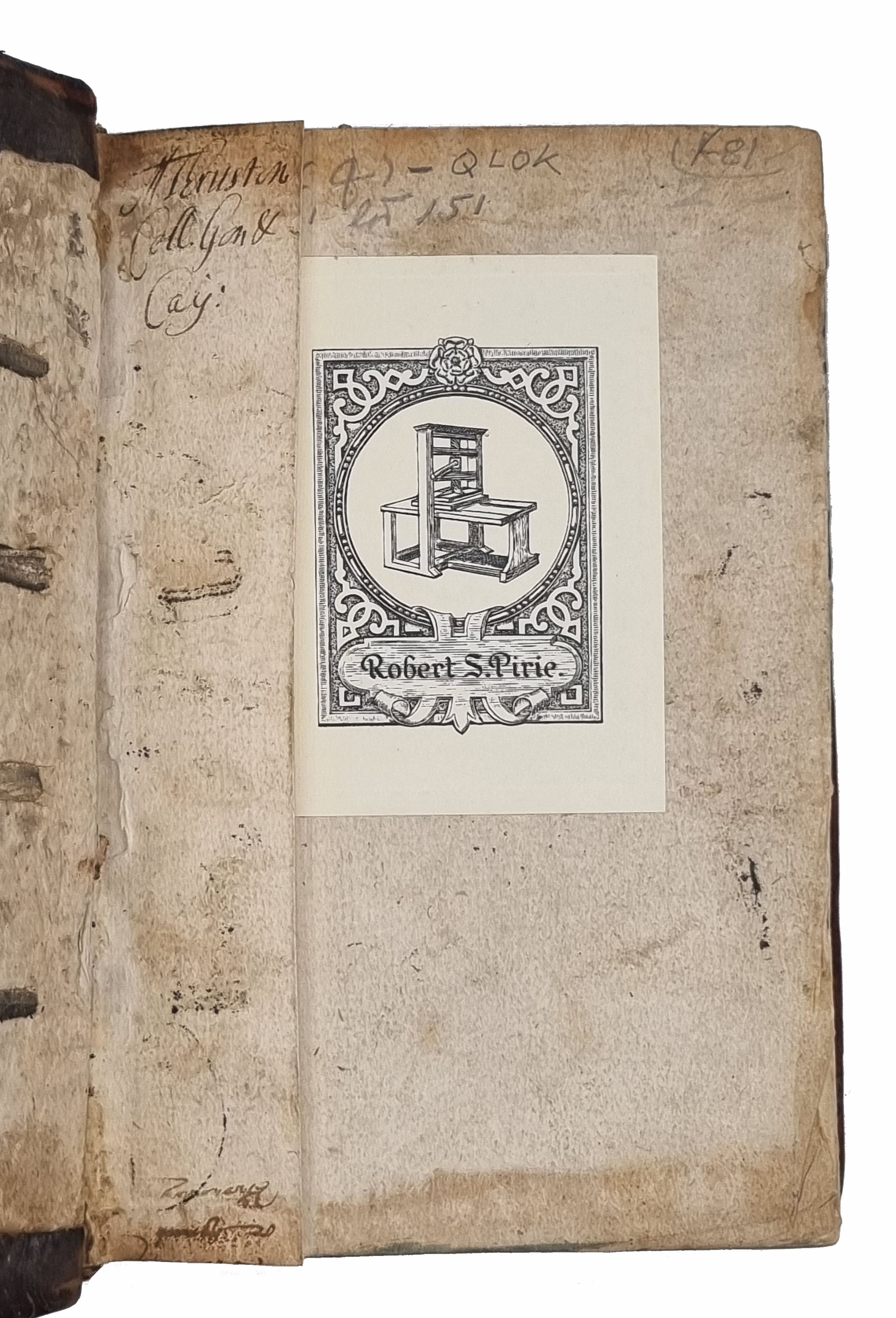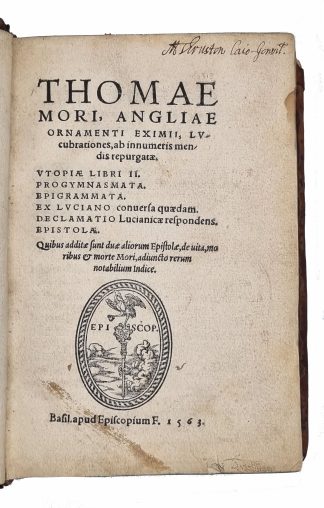MORE, St. Thomas
CONTEMPORARY ENGLISH BINDING
Lucubrationes,abinnumerismendis repurgatae. Vtopiae libri 2. Progymnasmata. Epigrammata. Ex Luciano conuersa quaedam
Basel, apud Episcopium F.(roben), 1563£9,750.00
FIRST EDITION thus. 8vo. pp.(32), 530,(46). - 8, a-z8, A-N8. Roman and Italic letter, some Greek. Froben’s woodcut device on title, repeated on verso of last, full page woodcut of the Island of Utopia, white on black floriated initials, underlinings and occasional marginal annotation in an early hand, autograph “Th. Thruston, Caio-Gonvil” in C17th hand at head of t-p. repeated on stubb, price record, dated 1766, of 2 shillings on fly, Robert S Pirie’s bookplate on fly. Light age yellowing, first few leaves with some mostly marginal soiling, a7 soiled in lower margin (original paper soiling), closed tear in upper margin of a4, the very rare mark or spot. A very good copy, crisp and clean, with good margins, in contemporary English dark calf, covers bordered with a quadruple blind rule, spine with blind ruled raised bands, all edges blue, ‘Moras’ in contemporary hand to fore-edge, small crack to head of upper joint, tear to lower compartment on spine, fore-edge of upper cover worn, corners worn.
First edition of the Latin works of St. Thomas More, a collection of five works and 13 letters, containing the Utopia, the Epigrammata, the translation of Lucian and the epistle to Dionysius, finely printed by Froben, including a beautiful full page woodcut of the island of ‘Utopia’. The Utopia, based on Froben’s edition of 1518, includes the prefatory letters of Erasmus to Johannes Froben, Guillaume Budé to Thomas Lupset, Pierre Gillis to Jerome Busleyden, Thomas More to Peter Gillis and Jerome Busleyden to Thomas More. It also includes the annotations by Erasmus. The Epigrammata is based on the revised first separate edition, also printed by Froben, in 1520, including the dedicatory letter to the German humanist Willibald Pirckheimer by Beatus Rhenanus (a well known editor of classical texts, an associate of Froben, and a friend of both Erassmus and Pirckheimer) in which he writes glowingly about More and his epigrams praising his wit, language, style, learning and ability as both translator and composer. By far the most important of More’s Latin works was the Utopia, the pre-eminent humanistic dialogue, appealing for the application of wisdom in the life and government of men, but at the same time a delightful work of entertainment and irony. The origin of a new word in the English language (and subsequently in many others), the work was the model or source for innumerable ‘Utopias’ or ‘distopias’, from Bacon’s ‘New Atlantis’ in the C17, through Swift in the C18, to Huxley and Orwell in the C20. It was More’s greatest literary work, achieving immediate international success, and probably the most significant and enduring by any Englishman of the age. “It was written, like Gulliver’s Travels … as a tract for the times to rub in the lesson of Erasmus; it inveighs against the new statesmanship of an all-powerful autocracy and the new economics of large enclosures and the destruction of the old common-field agriculture, just as it pleads for religious tolerance and universal education … Utopia is not, as often imagined, More’s ideal state; it exemplifies only the virtues of wisdom, fortitude, temperance and justice. It reflects the moral poverty of the states which More knew, whose Christian rulers should possess also the Christian virtues of Faith, Hope and Charity … [More] is both a saint to the Catholic and a predecessor of Marx to the Communist. His manifesto is and will be required reading for both, and for all shades of opinion between” Printing and the Mind of Man 47, on the 1st edn.
This copy is particularly interesting as it is preserved in a contemporary English binding showing the work was imported to the UK shortly after its publication, despite Thomas More’s then status in England as a ‘traitor’. John Venn in his Biographical History of Gonville and Caius College records a donation made by a “Thomas Thruston MD, fellow commoner”, who left all his medical books and £50 to the college circa 1700, most probably the same Thomas Thruston who once owned this work.
In stock


